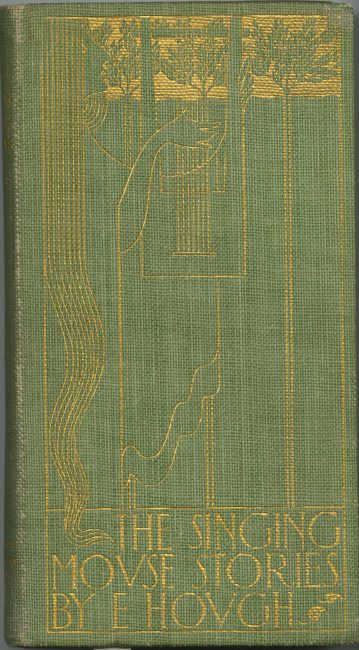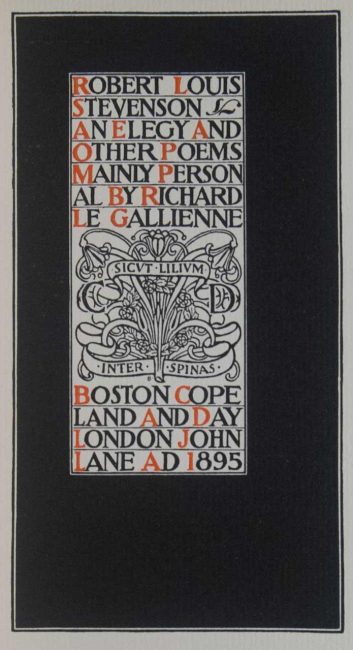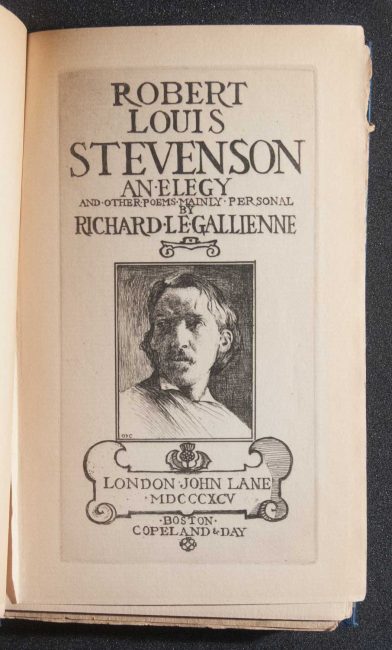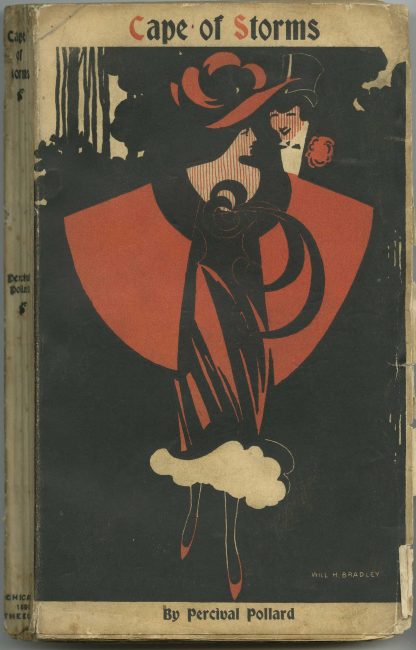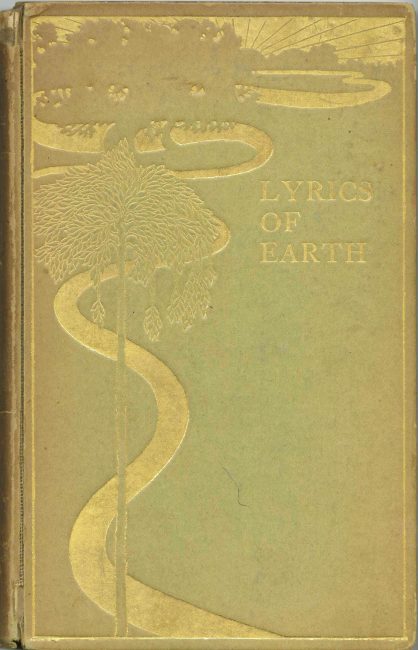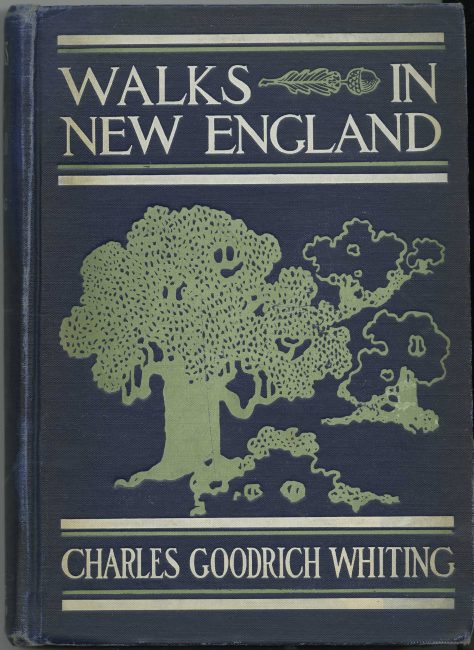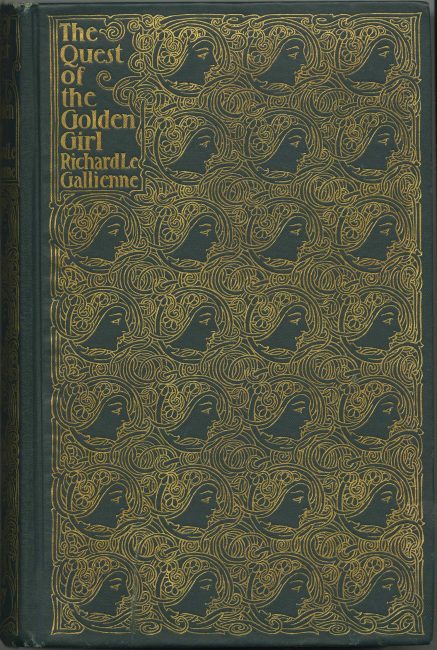A collection of short stories (most of which were previously published in the journal, Forest and Stream), The Singing Mouse Stories was the first book published by Emerson Hough, an American author and conservationist who would go on to publish over twenty-one works. Hough self-financed the book’s production, and he was responsible for all of the logistics of printing, sales, and distribution. The cover and illustrations for the book were designed by Bradley; Hough seems to have selected him mainly because Bradley’s style was fashionable at the time. Hough issued The Singing Mouse Stories in what he thought would be a portable pocket-sized edition. He hoped that this would be convenient for his readers, as well as a way to spur word-of-mouth sales. The exact opposite proved to be the case. Many book stores disliked the format; Hough later wrote that never “did I ever see any human being reading a copy of this book on the street car or anywhere else.” Hough’s later summation was that the book “did not get anywhere much,” with Hough’s literary career picking up only a few years later when he was commissioned to write The Story of the Cowboy (1897), a work which established him as a writer of Westerns and historical novels.
Richard Le Gallienne was an English poet and journalist. Le Gallienne was a great admirer of the author Robert Louis Stevenson, and in December 1893 Stevenson (who was then at the height of his popularity) had sent Le Gallienne a kind letter praising Le Gallienne’s writing and encouraging him in his literary career. After Stevenson’s sudden death in December 1894, Le Gallienne penned an elegy on Stevenson, which was first published in the Daily Chronicle on Christmas in 1894, and widely reprinted afterwards, here providing the title to this collection of poems. Bradley designed the title page for the American edition, of which 530 copies were printed.
Although their title pages both list information for the American and English publishers, the two editions are completely different from each other, with each one having its own unique binding, illustrations, title page, and layout. In contrast to Bradley’s design, the English publishers opted for a printed etching of Stevenson. This copy was once owned by the Irish poet William Butler Yeats.
Cape of Storms, a novel by the American writer and journalist Percival Pollard, was published in a limited edition of 800 copies. Bradley’s cover art from the July 1, 1895, issue of The Echo was cropped and reused for the cover.
Archibald Lampman was a Canadian poet. Lyrics of Earth, his second volume of poems, was a collection of nature poems, all tied to the progression of the seasons. Most of the poems were completed by 1893, but their publication was delayed by a long string of rejections until 1896, when Lyrics of Earth was printed in an edition of 550 copies. The volume met with generally good reviews, but it sold poorly. The book appeared with a cover designed by Bradley. This copy is one of fifty special copies that were printed on handmade Arnold paper. The bindings of the Arnold paper copies were stamped in gold, as seen here; the bindings of the regular edition copies were instead printed with green ink.
Walks in New England used an enlarged variation on the cover that Bradley designed for A.E.’s The Earth Breath in 1897. The original cover design had also been previously reused for the 1901 publication of A.E.’s Homeward Songs by the Way.
Bradley designed the cover for Richard Le Gallienne’s novel, The Quest of the Golden Girl. The novel, which became Le Gallienne’s most popular publication, went through several subsequent editions, each of which reused Bradley’s design, though with variations in the color scheme. A romance novel depicting a thirty-year-old poet’s search to find the “perfect woman,” much of the book’s plot consisted of thinly veiled autobiographical accounts of Le Gallienne’s own escapades. Bradley later wrote that his cover design “nearly br[oke] the publisher’s heart by what it cost for cutting and gold leaf.”

